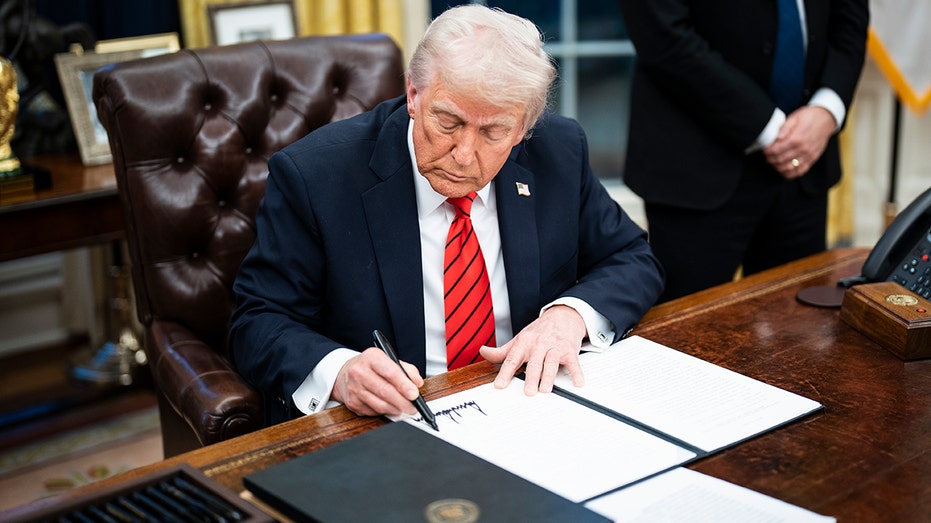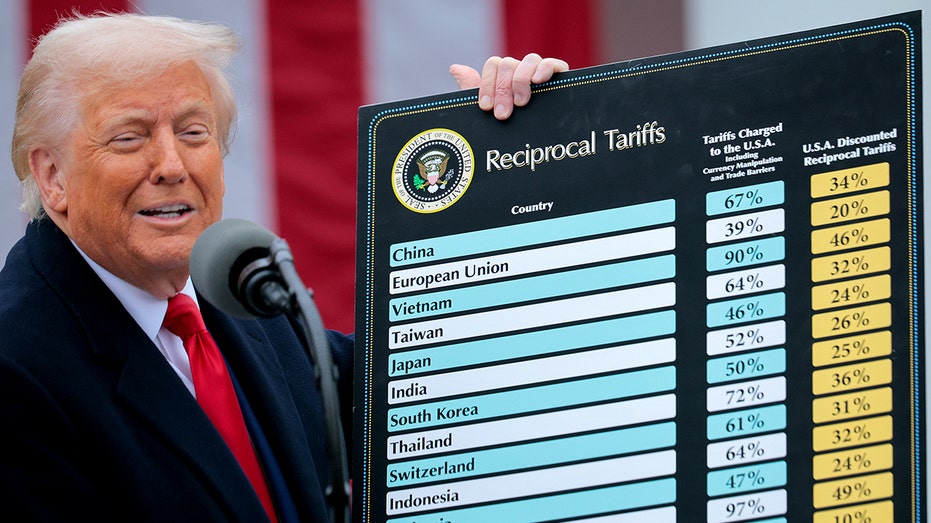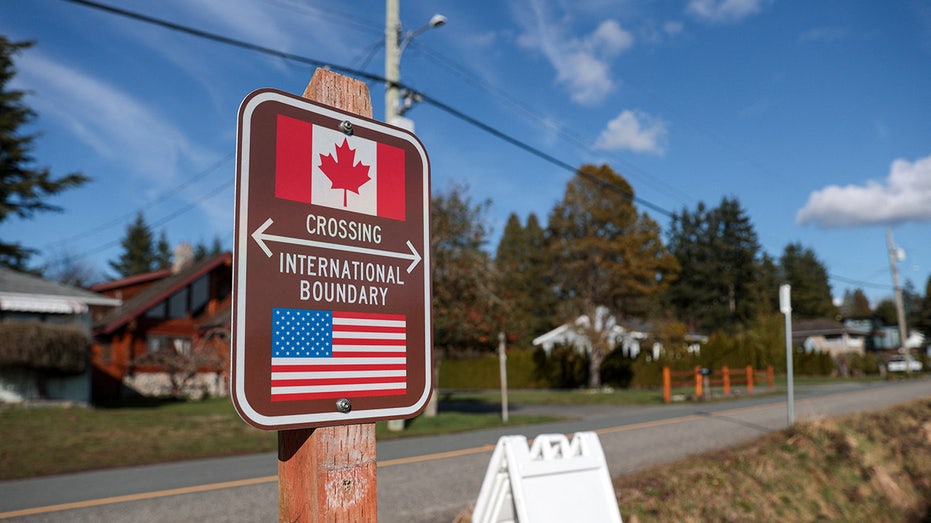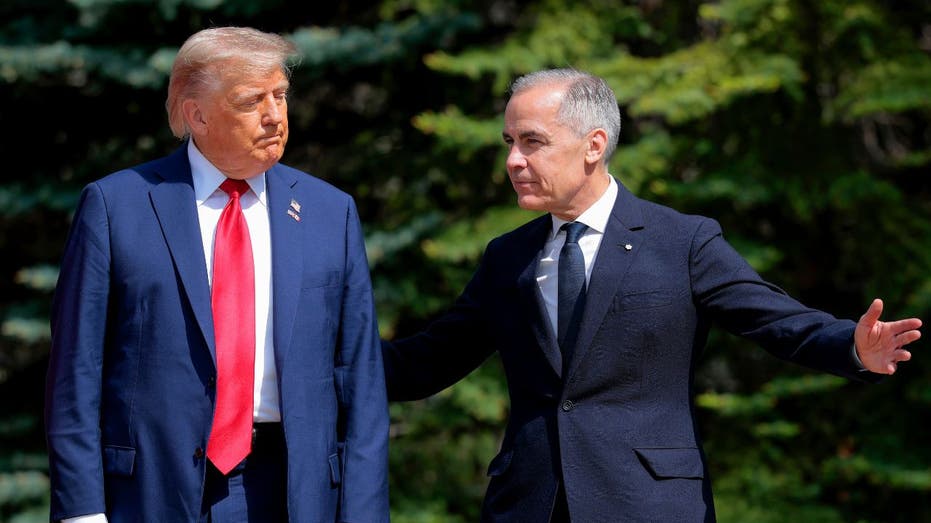President Donald Trump is increasing the tariff on Canada from 25% to 35% beginning on Friday, after the U.S. neighbor to the north failed to help curb the imports of fentanyl and other illicit drugs.
The White House noted Trump signed an executive order on Thursday to increase the tariff in an effort to hold Canada accountable for its role in the flow of illicit drugs into the U.S.
Additionally, Trump signed another executive order on Thursday to modify the reciprocal tariff rates for some countries to further address the United States’ trade deficits.
The action reflects Trump’s efforts to protect the U.S. from foreign threats to national security and the economy by securing "fair, balanced and reciprocal trade relationships," the White House said.

President Donald Trump signed an executive order on Thursday, increasing the tariff on Canada from 25% to 35% over the country's failed efforts to curb the flow of fentanyl into the U.S. (Jabin Botsford/The Washington Post via Getty Images / Getty Images)
The president announced an additional 10% tariff on all countries, though he also announced higher tariffs for countries the U.S. has large trade deficits with, on April 2, and they became effective on April 9.
Trump and his team have since made several trade deals with several countries.
For instance, the U.S. struck a deal with the European Union in which the EU agreed to purchase $750 billion in U.S. energy and make new investments of $600 billion by 2028. The EU also agreed to accept a 15% tariff rate.

President Donald Trump speaks during a "Make America Wealthy Again" trade announcement event in the Rose Garden at the White House on April 2, 2025, in Washington, DC. (Chip Somodevilla/Getty Images / Getty Images)
The U.S. also made a deal with Japan, which agreed to invest $550 billion in the U.S. to rebuild and expand core American industries. Japan also agreed to further its own market to U.S. exports, and like the EU, Japan agreed to pay a baseline 15% tariff rate.
A list of modified reciprocal tariffs from the White House shows that Syria will face a 41% tariff, while Myanmar and Laos will be charged a 40% tariff.
Switzerland will be required to pay a 39% tariff; Serbia and Iraq will be charged a 35% tariff; and Algeria, Bosnia and Herzegovina, Lybia and South Africa will be charged a 30% tariff.
The White House said Trump is using tariffs as "a necessary and powerful tool to put America first after many years of unsubstantiated trade deficits that threaten our economy and national security."

The Trump administration is imposing a 35% tariff on Canada for failing to address the fentanyl crisis. (Jason Redmond/AFP via Getty Images / Getty Images)
One threat to the U.S. is the flow of fentanyl from both Mexico and Canada, which Trump addressed with the 35% tariff on Canada.
Earlier this month, Trump threatened to impose the 35% tariff on Canadian goods on Aug. 1, after accusing Canada of failing to stop the flow of fentanyl into the country, and instead retaliating with its own tariffs.
According to U.S. Customs and Border Protection (CBP), 74 pounds of fentanyl have been seized at the northern border in fiscal year 2025.
The White House said Mexican cartels are operating fentanyl- and nitazene-synthesis labs in Canada.
The Trump administration also claimed Canada-based drug trafficking organizations maintain "super labs," in rural and dense areas in western Canada. Some of the labs can produce 44 to 66 pounds of fentanyl per week.

Canadian Prime Minister Mark Carney greets U.S. President Donald Trump at the official welcome ceremony during the G7 Leaders' Summit on June 16, 2025, in Kananaskis, Alberta. (Chip Somodevilla/Getty Images / Getty Images)
In a letter to Canadian Prime Minister Mark Carney earlier this month, Trump said it was a great honor to send a letter demonstrating the strength and commitment of the U.S. and Canada’s trading relationship. But he also pointed to a relationship gone sour, stating that the U.S. has agreed to continue working together, despite Canada imposing tariffs against the U.S.
Trump warned Canada that beginning Aug. 1, the U.S. would charge Canada a tariff of 35% on Canadian products sent into the U.S., separate from all sectoral tariffs. He also said any goods shipped in a way that evades the 35% tariff, Trump said, will be subject to the higher tariff.

Canadian Premier of Ontario Doug Ford responded on Thursday to Trump’s executive order to raise the tariff to 35%, saying, "We need to stand our ground."
"The increase in U.S. tariffs to 35 per cent is concerning, especially with tariffs still in place on steel, aluminum, autos, forestry and now copper," Ford said in a post on X. "While Canada continues to benefit from zero tariffs on all trade that’s USMCA compliant, representing over 90 per cent of our American exports, we need to do everything in our power to protect workers, businesses and communities from the impact of tariffs. The federal government needs to hit back with a 50 per cent tariff on U.S. steel and aluminum.
"Canada has what the United States needs: oil and gas, critical minerals, steel and aluminum, electricity, potash and uranium," he continued. "We’re America’s number one customer and keep millions of Americans working. The federal government needs to maximize our leverage and stand strong in the face of President Trump’s tariffs."
Ford said the Canadian government will do whatever to support its workers and businesses, as the country continues to build a more competitive, self-reliant and resilient economy.
"Canadian workers and businesses are desperate for certainty," Ford said. "Let’s work together, united, to deliver it."
Earlier this year, President Trump imposed 25% tariffs on Canadian steel, automobiles and other goods not covered under the U.S.-Mexico-Canada Agreement.
Canada retaliated by imposing $43 billion worth of its own tariffs against the U.S.
Trump announced the tariffs on his first day in office in January after declaring fentanyl deaths a national emergency.
